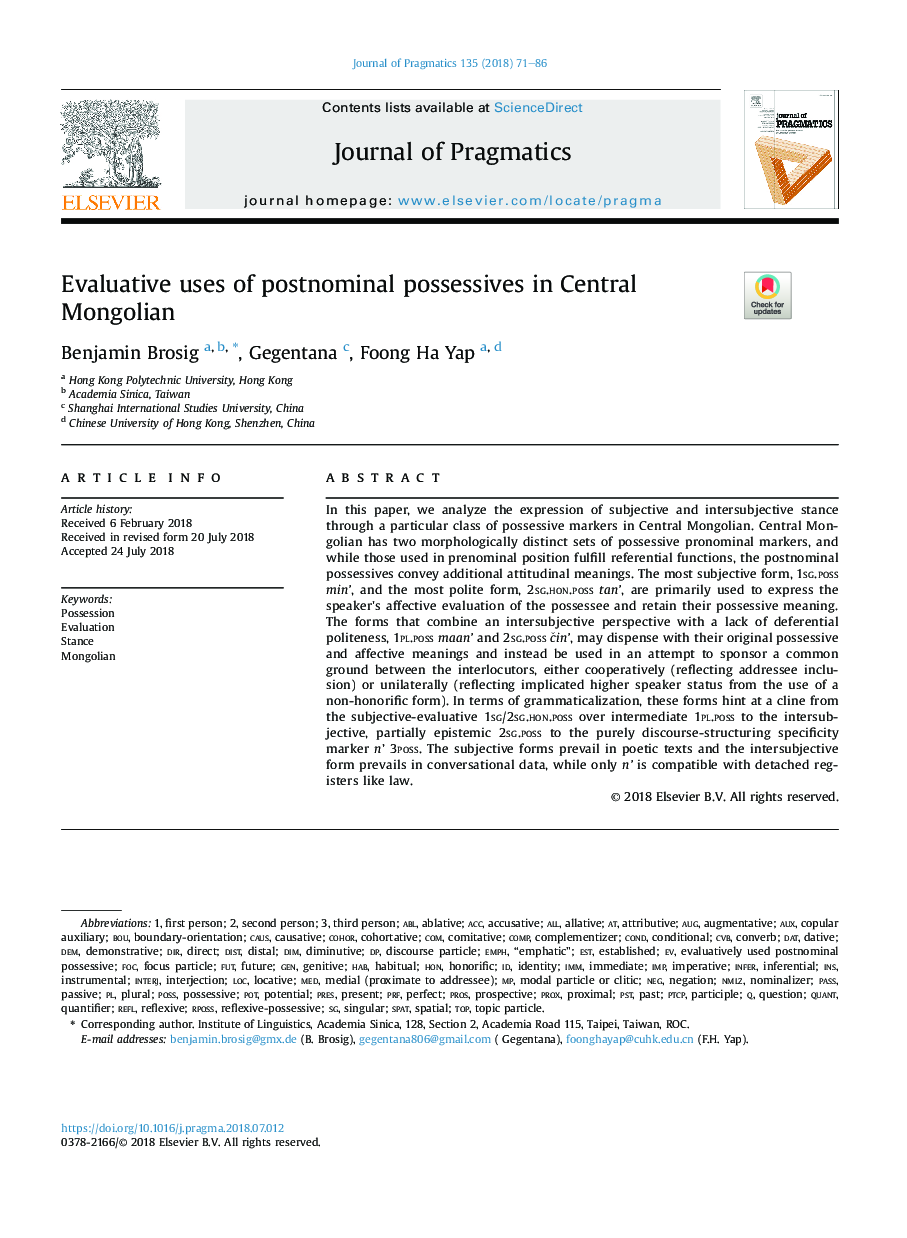| Article ID | Journal | Published Year | Pages | File Type |
|---|---|---|---|---|
| 11020583 | Journal of Pragmatics | 2018 | 16 Pages |
Abstract
In this paper, we analyze the expression of subjective and intersubjective stance through a particular class of possessive markers in Central Mongolian. Central Mongolian has two morphologically distinct sets of possessive pronominal markers, and while those used in prenominal position fulfill referential functions, the postnominal possessives convey additional attitudinal meanings. The most subjective form, 1sg.possmin', and the most polite form, 2sg.hon.posstan', are primarily used to express the speaker's affective evaluation of the possessee and retain their possessive meaning. The forms that combine an intersubjective perspective with a lack of deferential politeness, 1pl.possmaan' and 2sg.possÄin', may dispense with their original possessive and affective meanings and instead be used in an attempt to sponsor a common ground between the interlocutors, either cooperatively (reflecting addressee inclusion) or unilaterally (reflecting implicated higher speaker status from the use of a non-honorific form). In terms of grammaticalization, these forms hint at a cline from the subjective-evaluative 1sg/2sg.hon.poss over intermediate 1pl.poss to the intersubjective, partially epistemic 2sg.poss to the purely discourse-structuring specificity marker n' 3poss. The subjective forms prevail in poetic texts and the intersubjective form prevails in conversational data, while only n' is compatible with detached registers like law.
Keywords
POSSDATABLPSTIMPCOMAugmentativeQuantPRESCOMPAUGACCCVBFocus particlenominalizerAttributiveDemlocativePTCPFUTemphPRFHABINSPROXDIrFOCFutureaccusativeDIMevaluationESTInferentialImperativeimmHonfirst personMEDReflexiveTOPAUXDemonstrativeSpatComplementizerpluralgenitivePresentStanceinterjectiondativeDistalPotQuestionthird personsecond personQuantifierProShabitualPASScausSpatialImmediateAblativePossessiondistLocdirect CondParticipleConditionalpossessiveMongolianSingularPassiveNegationnegALLIdentityInstrumental PotentialProximalProspectiveGENPerfectdiminutivePASTCausative
Related Topics
Social Sciences and Humanities
Arts and Humanities
Language and Linguistics
Authors
Benjamin Brosig, Gegentana Gegentana, Foong Ha Yap,
